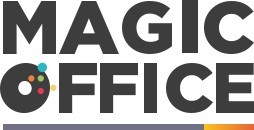Unveiling the Interdepartmental Divide: Identifying Communication Blockades in UK Offices
Spotting the Hurdles to Seamless Communication
Effective communication is the cornerstone of a thriving workplace. However, within the complex structure of UK offices, silos and communication blockades are not uncommon. These barriers can arise from a variety of factors: from the hierarchical division to a lack of shared objectives. The result is often duplicated efforts, decreased morale, and ultimately, a dip in productivity. By understanding the root causes of these divides, office managers can implement targeted strategies to overcome them.
Mapping the Terrain of Team Dynamics
Interdepartmental communication is a multifaceted issue, influenced by team dynamics and individual roles. It's essential to recognize that each department has its unique jargon, objectives, and performance metrics. These differences can inadvertently lead to misunderstandings and a disconnect between teams. To bridge this gap, it is crucial for office managers to foster an environment where cross-departmental dialogue is encouraged and facilitated regularly.
Utilizing Technology to Foster Connectivity
In the digital age, leveraging technology is a must for enhancing communication across departments. Platforms that support project management and real-time messaging are invaluable for breaking down barriers and promoting transparency. By adopting such tools, office managers can create a more interconnected workforce, paving the way for a cohesive corporate culture that drives the company forward.
Analyzing Communication Channels for Optimal Flow
To dismantle the barriers to communication, it is also vital to analyze the current communication channels in use. Are emails going unread? Do meetings end with actionable items or more confusion? Understanding the effectiveness of each channel can help office managers streamline processes and introduce more productive methods of interaction that align with modern office communication preferences and trends.
Encouraging Inclusive Corporate Languages
Another pivotal aspect is to promote an inclusive corporate language that transcends departmental boundaries. When all employees speak a unified language that is inclusive of the company’s mission, values, and goals, it not only enhances understanding but also instills a sense of shared purpose. This cultural aspect of communication is a strategic point of intervention for office managers seeking to create a harmonious work environment.
Cultivating a Shared Corporate Culture: Strategies for Office Managers to Unify Teams
Cultivating a Shared Corporate Culture: Strategies for Office Managers to Unify Teams
Embracing Diversity for Inclusive Corporate Culture
In today's multifaceted work environment, diversity is not just a buzzword, but a building block of a dynamic corporate culture. Office managers can pave the way for a more inclusive and collaborative workspace by promoting diversity initiatives. This includes conducting workshops, celebrating different cultures, and ensuring that all voices are heard in decision-making processes. Statistics from notable HR sources have consistently shown that companies with diverse teams are 35% more likely to outperform their competitors.
Fostering Open Communication Channels
A pivotal role of any office manager is to cultivate open lines of communication. Creating an environment where staff feel comfortable to share ideas and concerns can bridge gaps between departments. Tools like internal networking events, team-building activities, and regular interdepartmental meetings can enhance collaboration and break down silos in UK offices. Incorporating user-friendly communication platforms, like Slack or Microsoft Teams, also plays a crucial role in modern-day corporate culture.
Implementing Team-Wide Goal Setting
Unity is often forged through a common purpose. Office managers can facilitate this by setting clear, achievable goals that require cross-departmental collaboration. Use SMART (Specific, Measurable, Achievable, Relevant, Time-bound) criteria to set these objectives and encourage teams to contribute collectively. Reference leading management literature that suggests goal alignment can increase productivity by up to 25%.
Creating Opportunities for Cross-Departmental Interaction
Organizing social events and joint projects can do wonders for enhancing interdepartmental communication. Examples include office-wide challenges, charity events, or innovation hackathons. These activities not only foster a sense of team spirit but also allow employees to understand the roles and contributions of their colleagues in other departments.
Leading by Example and Continuous Improvement
The tone for corporate culture is set at the top. Office managers that demonstrate a commitment to communication and collaboration set a precedent for the entire office. By seeking feedback and being receptive to change, they can continuously improve the working environment. Introduce a feedback system that allows anonymous suggestions to help identify areas for cultural enhancement.
Leveraging Technology for Shared Culture
Technology plays a key part in reinforcing a shared corporate culture. Office managers should leverage project management tools and intranet systems to maintain an aligned focus across departments. Interactive dashboards and real-time analytics can also help monitor progress towards shared goals and celebrate collective achievements, keeping teams motivated and united.









